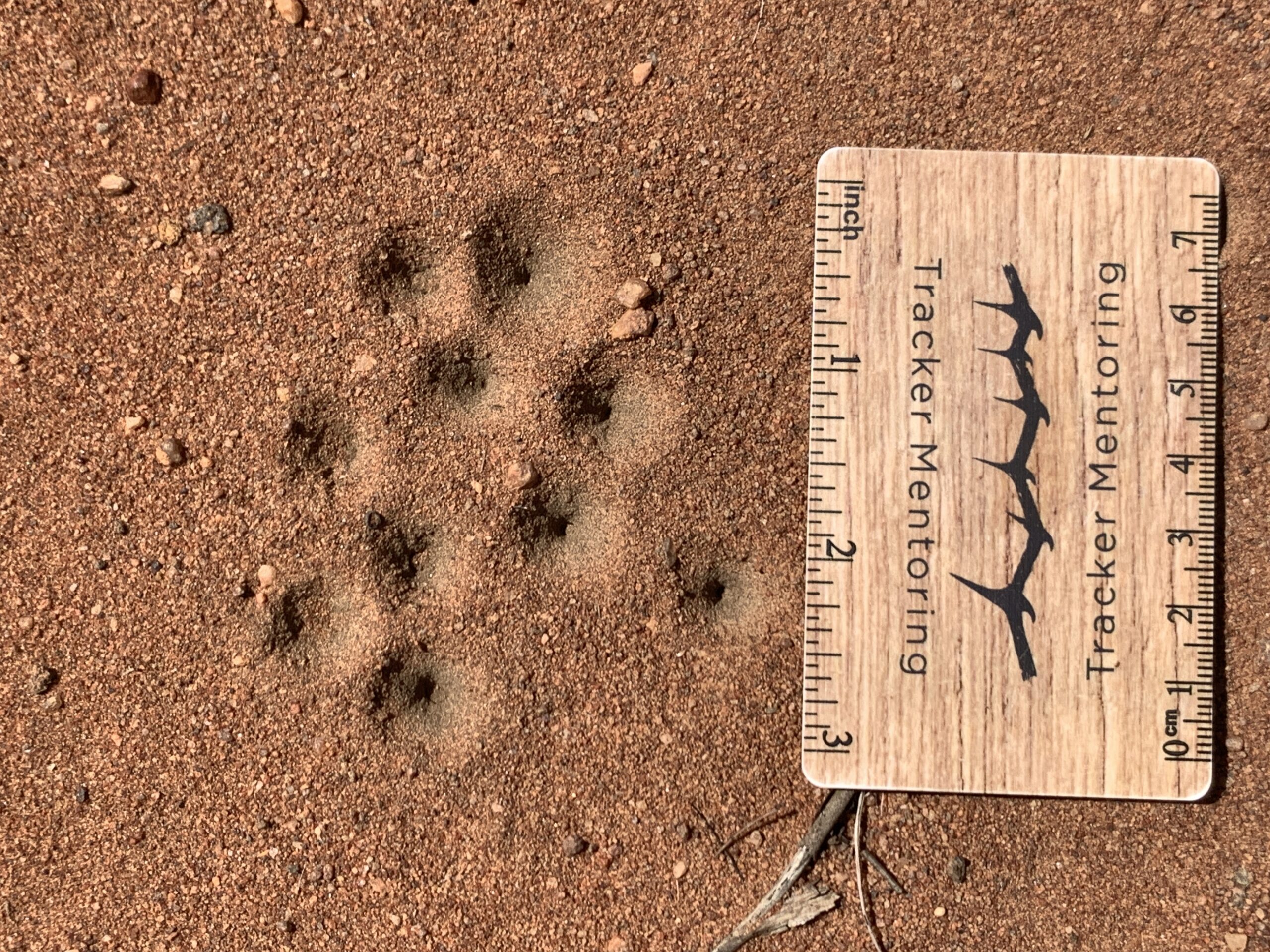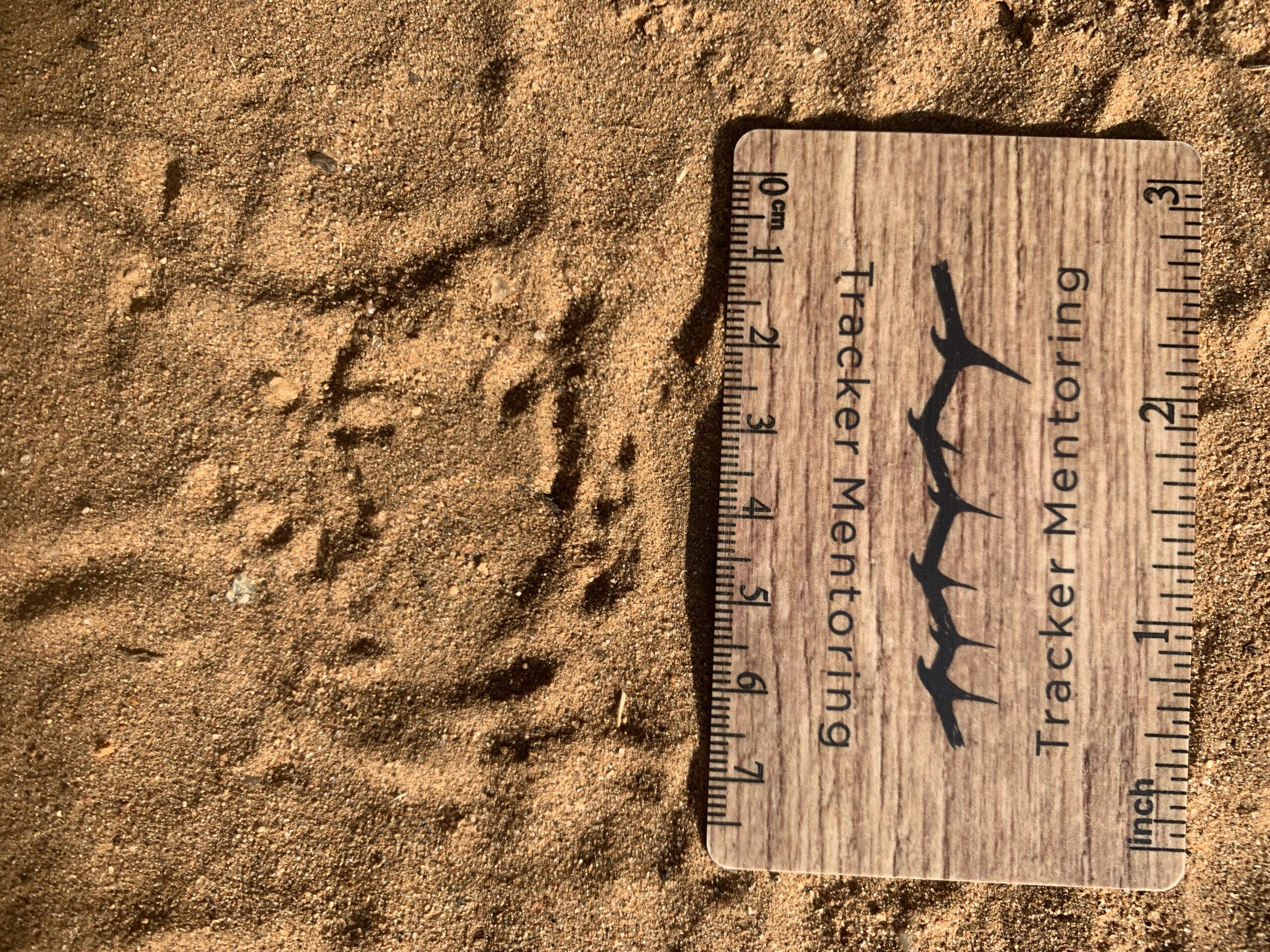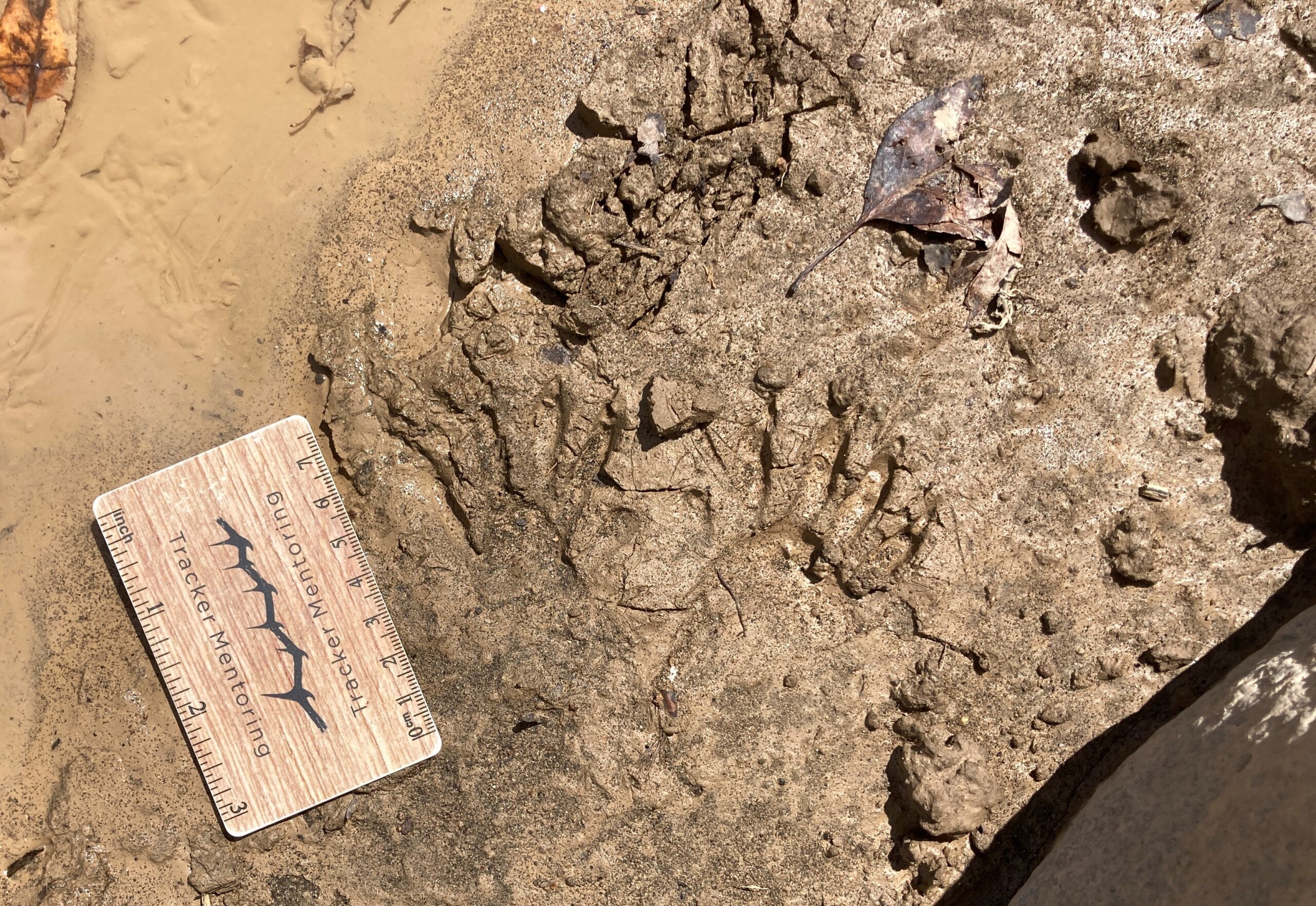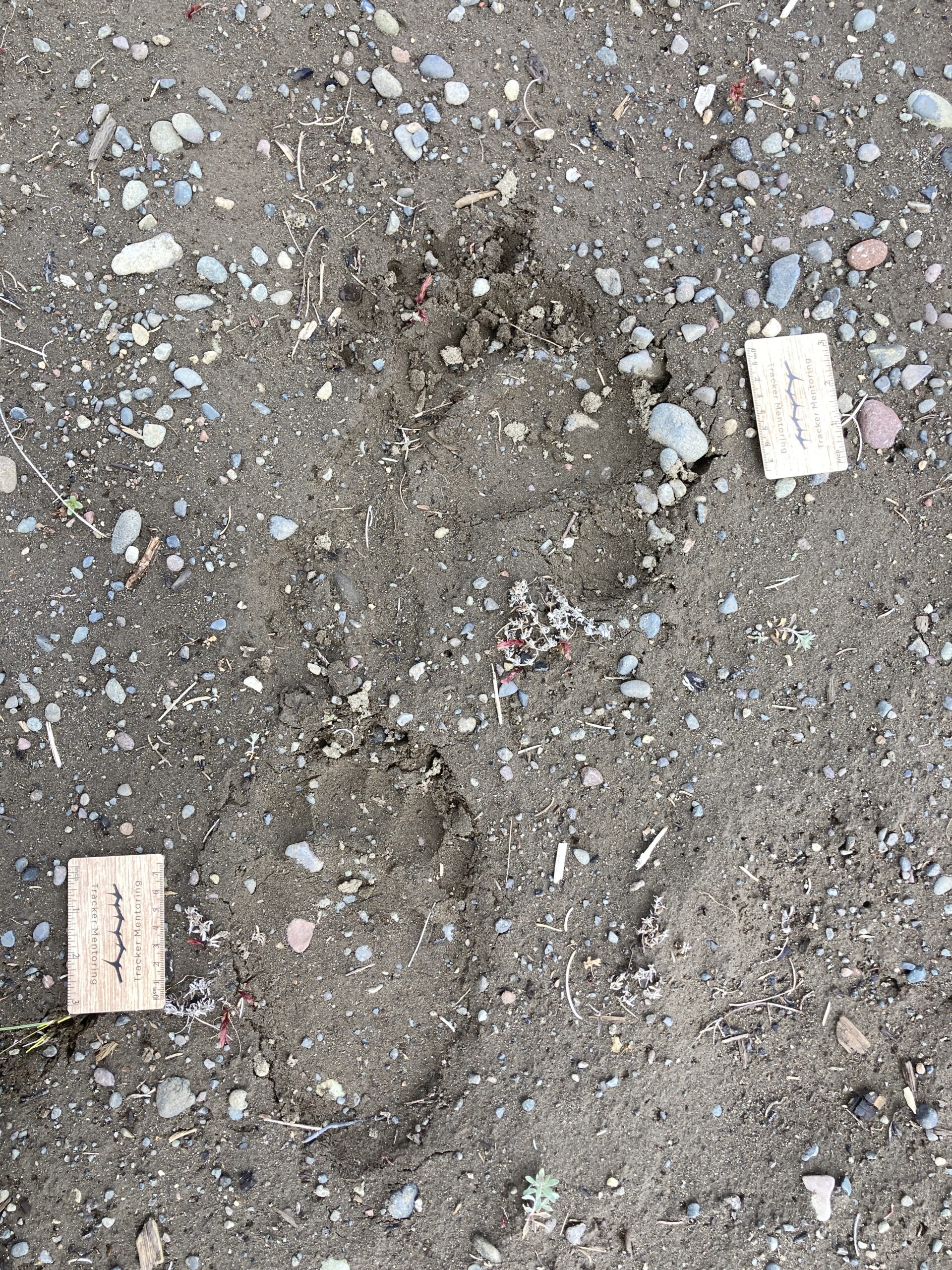Question 1
This photo comes from the central, western side of the Kruger Park region of South Africa, but these beings are found across the world.
Describe what you see.
Who or what is it?
Can you tell us something about the life cycle or behaviour of the makers of this sign?

Bill answered: These are ANTLIONS, more specifically Antlion larvae. They burrow into the ground and form a pit that ants will slip into and get chomped onto; a much smaller version of the pit that Boba Fett got tossed into in Star Wars. Anyhow, the larvae which does not have an anus! They will cocoon and eventually turn into an adult that looks like a damselfly.
Question 2
This photo comes from the central, western side of the Kruger Park region of South Africa, but these beings are found across the world.
Describe what you see.
Who or what is it?

Shane answered: Frog! I see the outline of a resting frog. The front feet are facing inward, the back toes are registering in a line and I see a little bit of a belly print. Direction of travel is from the bottom of the picture to the top.
Question 3
3. This photo comes from northern Yellowstone, USA, but these beings are found in many other areas of North America and the world.
Describe what you see.
Who or what is it?

So answered: I see two tracks that are adjacent and close to each other. I can mostly just make out the long digits that are shaped like little hot dogs. I also see the forward edges of both meta pads impressing and causing shadow, and there is some flattening below that. Five toes are visible on each, but the first inside toe in each is not as visible. They appear to be the left front and right hind tracks of a raccoon.
Question 4
This photo comes from northern Yellowstone, USA, and these beings have a somewhat restricted range, but similar species are found in many other places in the world.
Describe what you see.
Who or what is it?
“Bonus Points” for explaining how their tracks differ from their nearest relative.

Bill answered: These are some “big boy” tracks! Although I have some “big” black bear plaster casts on my desk that are close to this size, these are definitely larger than any black bear tracks that I have come across. This is a GRIZZLY BEAR. A classic slow 2X2 walk with the bottom track being the LH with the flat oversized and connected tarsal and metatarsal heel pad (not as common in black bears) and the other being the RF with the oversized bulbous carpal pad.
Kersey adds: Grizzly bears are diggers, and that’s one way that they differ from black bears. Another way to differentiate them is to draw a line from the bottom of toe 1 to the bottom of toe 5 in the front foot, it is much straighter in grizzlies and doesn’t bisect much of the pad below, whereas the same trick with black bears bisects a noticeable amount of the pad.
Thanks for contributing everyone! Well done and Keep Going. This is for you and your learning! Remember to email us any photos that you’d like to contribute to quizzes, from where you are in the world (it does not have to be Africa or North America). Please be patient with us as we figure out the best ways to deliver these to you and create a more permanent record that you can study from in the future. Also, don’t be shy if you think we’ve made a mistake – nobody is correct all of the time and even Master Trackers lose the trail – sing out and help us to learn, too!
One hundred percent of donations made in Brandon’s name are set aside to help provide for a high school or college student to travel to South Africa to participate in an Original Wisdom program. The student must have a strong passion for photography and/or wildlife tracking and be a part of a program or class that is learning about and working towards conservation.